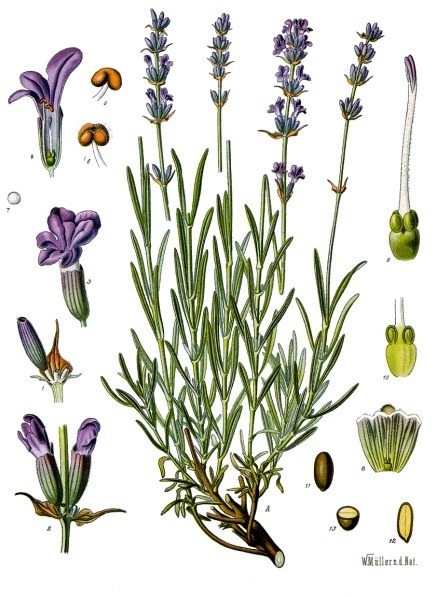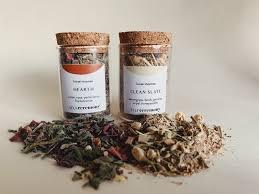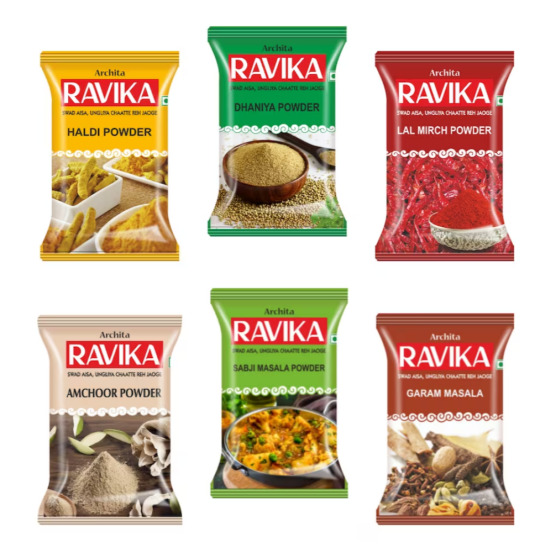#importance of mint water importance of mint leaf
Explore tagged Tumblr posts
Note
Could you write about stan or Ford taking care of their sick s/o? I've been suffering from an awful head cold this past week and it sucks i could really use the comfort 😭
sick days with Stan & Ford (x reader)
a/n: starting with smth sfw while i work on… other things hehehhe but I hope you’ll feel better! take your meds and let yourself rest 💌 and thank u for the ask, anon!!
Stanford Pines

the kind of man who fights interdimensional monsters but still worries if your tea is the right temperature.
he tucks you onto the couch, fussing over pillows and blankets until you’re buried like some kind of marshmallow. then he disappears into the kitchen, where you can hear pots clanging and. . . is that the blender?
when he returns, he’s holding a tray with a bowl of soup, a glass of water, and a strange concoction that’s vaguely green.
“head cold or not, you need fluids. hydration is important,” he says, setting a mug of something herbal-smelling on the coffee table. “this tea is from the forests of dimension 52. the locals swear by it for respiratory ailments.”
you squint at the mug. “it’s not gonna. . . mutate me, right?”
Ford pauses, adjusting his glasses. “probably not.”
“Ford!”
he chuckles, sitting beside you with a soft sigh. “it’s perfectly safe, i’ve tested it. besides, you trust me, don’t you?”
and of course you do, even when his idea of “helping” involves interdimensional remedies that could very well grow you a third arm.
you take a tentative sip. the taste is weird, but soothing, warming you from the inside out.
“good?” he asks, watching your face expression.
“yeah,” you admit, sinking deeper into the blanket. “not bad.”
satisfied or at least faking this, he leans back, but that little crinkle in his brow never really goes away.
“you’re overthinking again,” you notice, looking at him.
“i am not,” he says, entirely unconvincing.
“Ford.”
he sighs, rubbing the back of his neck. “i just hate seeing you like this, i keep thinking there must be something more i can do.”
you reach out, tangling your fingers with his. “you’re doing enough, really, just stay with me, okay?”
Ford’s expression softens and he brings your hand to his lips, pressing a kiss to your knuckles.
“always.” and he stays, reading to you from one of his journals while you drift in and out of sleep. his voice is calm, comforting and every so often, he pauses to carefully check your temperature.
Stan Pines

you wake up with your throat feeling like sandpaper and your head pounding. you barely have the energy to groan, let alone drag yourself out of bed, but the world outside your room is loud. voices from the tv, Stan’s yelling at it.
with blanket wrapped around your shoulders, you stumble out and see Stan sprawled on the armchair in his striped boxers and tank top, he’s shoving popcorn into his mouth by the handful, but when he sees you, he nearly chokes on it.
“jeez, you look like somethin’ the cat dragged in. worse than waddles after he found that mud pit last week.”
you sniffle. “thanks for the pep talk, Stan.”
he waves you over as his tone softens. “c’mon, c’mere. what’s wrong? flu? cold? bubonic plague? don’t tell me you’re contagious.”
you plop next to him, dropping your head onto his shoulder. the tv’s too loud, but you can’t even complain about it.
“it’s just a cold,” you murmur.
“cold, huh? well, that’s nothing to mess with,” you can hear the tease in his voice. “lemme get my doctor bag. got some snake oil in there that cures everything, even bad attitudes.”
he shuffles off to the kitchen, muttering about needing to find some ginger ale. he comes back with a mug of tea that looks. . . questionable. is that a bay leaf? and a handful of mints?
“drink this, kid, don’t ask questions.”
you sip and it’s awful. Stan grins as you make grimace. “told ya it’s magic. now, get cozy.”
he turns the tv down and drapes his old, scratchy afghan over you. you don’t know when it happens, maybe during some ridiculous commercial for glow-in-the-dark socks, but you fall asleep with your head still on his shoulder.
when you wake up, the tea’s gone, replaced by a cup of melted ice cream with a sticky spoon, meanwhile Stan is snoring loudly with his arm protectively thrown over you.
#gravity falls#x reader#fanfic#gravity falls x you#ford pines x reader#gravity falls x reader#gravity falls smut#stan pines x reader#ford pines smut#stanford pines#stan pines smut#gravity falls fanfiction#stan pines x you#ford pines x you#ford pines x oc#stanley pines smut#stanley pines x reader
227 notes
·
View notes
Text
Herbs 101 - Lavender
This post on website
Hi Tumblr! This is a post I have started over a month ago and now I've finally finished it. Lavender is such a popular herb, and I probably my favourite. The aroma it gives off is fenomenal. So, let's look at it a bit deeper!
In this post, you'll learn:
basic info (other names, properties, ...)
its history (historical uses, where it came from)
physical description (the very few traits species of lavender share)
uses (all kinds of ways in which you can use lavender and links to some recipes)
how to harvest it (when, where)
how to dry it (a few methods including specific steps)
Click Keep Reading to read the entire post right here, or you can read it on the blog page Lavender. There you can also find the .md file for download, so that you can import it into logseq or notion grimoire, or just for a shorter version in the form of bullet poitns!

Lavender
Basic Info
Species: Lavandula
Other Names: Elf Leaf, Nardus, Spike, Spikenard
Most Popular Types: English Lavender, Spanish Lavender
Known Species: 47
Family: Lamiaceae (the mint/sage family)
Native to: Old World (historic Euro-Asia), to the mountainous zones of the Mediterranean, where there is dry and stony soil
Planet: Mercury
Element: air, water
Properties: calming / peace + sleep, protection, love, purification
History
Lavender has been in use for over 2500 years. In ancient Egypt it was used for embalming and cosmetics. Greeks also used it for cosmetic purposes, and also for its medicinal properties (which for example Dioscorides or Theophrastus wrote about).
It’s name comes from the latin verb Lavare - which means “to wash”. So it’s not too surprising that it was used by both Greeks and Romans in herbal baths. Romans also recognized it for its antiseptic properties and they brought it with them on campaigns to dress wounds. On top of that it was used as incense in religious ceremonies, or in sick rooms to disinfect them. And Arabs were the ones who brought their medicine to Spain, where it spread across the rest of Europe.
During the middle ages, it wasn’t used as much at first, only by monks and nuns. It was grown in gardens of monastries. Then in Tudor England, when the monastries were dissolved (1536) the lavender moved to domestic gardens, often planted near the laundry and clothing was then laid on it to dry while getting that fresh scent on them. Also, Queen Elizabeth I. allegedly put it in tea to help with her migraines and as a perfume.
In 17th century, lavender was considered a cure-all. Naturally, the price rose, especially when the Great Plague stroke. It is also a part of Four Thieves Vinegar, liquid in which grave robbers washed belongings of plague victims.
Description
Of course, each lavender type is different, however they share many similarities. Their flowers are arranged in whorls (surrounding the stem) on spikes above the foliage. They can be blue, violet, or lilac, sometimes even blackish purple or yellowish. The leaves and the way they they grow varies greatly across different species. However, here is an illustration of English lavender:

Uses
A very common things are lavender sachets. Now while we may often simply use it to sniff it (which is totally valid use as well btw, especially if you kind of squeeze it during anxiety), it has other uses too. When kept between laundry (into wardrobe, or even some places you store seasonal clothing), it can both give it the wonderful scent and also deter insects. You can also toss them into the dryer together with your laundry (Tutorial)! And since it is famous for helping with relaxation and sleep, you can always keep it near / under your pillow to help you with that.
Another popular use is in essential oils. It brings all the benefits mentioned above. For the smell, you can dab them on your skin and sniff that, or diffuse them in an aroma lamp. In the history section, I’ve mentioned soldiers carried it with them to treat wounds. It was proven to help wounds heal and can still be used that way today. For topical use, ALWAYS USE DILATED OILS ONLY. You can check out the guide to diluting essential oils on aromaweb.
A common use for herbs is tea. Lavender tea brings all the benefits we talked about - it is relaxing and healing. Only the buds are used for making the tea, not the leaves. You can of course also mix herbs - some other popular choices are chamomile, which is also enhancing the relaxation and sleep of lavender, and mint, which can help with some digestive problems, but also just tastes good with it. Senchateabar.com has all these three recipes (as to how long you should brew them).
Another common use is culinary. So integrating lavender into all kinds of food recipes. Now, while most lavender is safe to eat, there are some that simply shouldn’t be, like Levandula Stoechas, Levandula Latifolia and Lavandin, but others will just make your food taste soapy and overly floral. What’s used in recipes is culinary lavender, which is usually cultivated from English lavender and has less oil than aromatic lavender. Awesomeon20.com has some wonderful recipes with lavender and I actually quite like this site for kitchen magick, because they talk about magickal properties of the ingredients used and also have posts about which recipes are good for holidays of the Wheel of the Year for example.
And finally, we can of course use lavender in spells. We use it for spells that need the properties of relaxation, sleep, healing, or love. Also protection or just for general “witchy” things (like enhancing intuition, etc.). This can include spell jars, burning the herbs, sprinkling some lavender infused water, making circles with them, or so many other things. Some spell recipes:
anxiety spell jar
sleep spell sachet
self love and healing spell jar
Harvesting and Drying
I won’t be going into how to grow lavender, however I do want to talk about how and when to harvest it and how to dry it. It takes about 3 years for the plant to mature, so while you can absolutely harvest a bit before they mature, leaving them alone helps them grow and develop more.
Now let’s look into when to harvest. For best fragrance and essential oil content, that would be in their early bloom cycle (meaning when the buds are barely starting to bloom - so you have the stem full of buds, and you already see few of them blooming, while the others are still closed). That applies to each individual stem. And also it is often said that you should harvest them in the morning, once dew has dried, because sun dissipates some of the fragrant essential oils.
You really don’t have to follow this strictly though. This is mostly to maximize the fragrance, and also because when the flowers mature and start browning, they tend to fall off the stem more easily. What you probably should follow is to not collect it wet. That means let the morning dew dry, and not collect within 24 hours of rain. That’s because damp environment increases the chance for the flower to rot.
As to how, we can use a small curved knife, which is ideal for cutting lavender, or pruning shears, or scissors. Just try to not use your hands for it, since that usually damages the stem, while sharp tools help it heal quicker. Also usually you want to organize them into bundles after cutting them, so you can wrap a rubber band around your wrist to make this easier.
Now to where exactly to cut. Well, with lavender used for culinary purposes, you should cut above any leaves and side branches, because leaves are not recommended for cooking (mostly for fragrance). Also please make sure your lavender is safe (and good) to eat before using it that way!
If you want longer stems, perhaps for decoration, or with lavender that doesn’t have much space between the flower and first leaves, then just follow the stem lower and cut at another junction. However, keep in mind that you shouldn’t cut more than two-thirds of the plant’s hight, so that it can continue to grow.
And now finally for drying itself. One way is to hang it in bundles in a dry, warm, airy room. Also in the dark, which helps it keep its color. To help the air circulate, you can just use a fan (if it’s some space like a basement or a closet). The bunches should be tied secure enough, so that it doesn’t fall apart, but not too tight. Also one source recommends to not dry them in spaces like garage, where they’d be exposed to engine and chemical fumes. It can take up to 6 weeks for them to dry this way, and you’ll know the stems are dry once they break instead of bending.
Another way is to dry them in food dehydrator. This speeds up the drying process significantly, while keeping the quality of the flowers. For this, remove the stems, leaving only flower buds in tact. Put them on the dehydrator trays so that they don’t touch each other (and use tray liners if you have them and the flowers are falling through, or even parchment paper). Set it to a low temperature - 95°F (or 35°C). It shouldn’t be more than 100 to 105°F (if you don’t have a lower setting). It should take about 24 to 48 hours to dry completely. Again, to find out if it’s dry, just try to snap one of the larger bud bundles in half, and if it bends, then it’s not dry yet.
Another method is to dry them in an oven. This is not ideal, because lowest setting on ovens is about 180°F (80°C), which, as you can notice, is more than the highest setting we could dry it in the food dehydrator. This amount of heat releases the essential oil from the flower buds. That’s why when using it, you should check on it every few minutes. And also leave the door slightly open so that the moisture can escape.
Then there’s microwave. That’s even harder to watch than an oven, so it is likely to produce less fragrant lavender. Or you can press it between heavy books, and leave it a few days to dry. That’s a method we usually use when making our own herbals.
Then you usually remove all the dried buds and either seal them in an airtight glass container. And you’re ready for using it!
Sources
The Modern Witchcraft Guide to Magickal Herbs by Judy Ann Nock
Cunningham’s Encyclopedia of Magical Herbs by Scott Cunningham
newcropsorganics - lavender history, taxonomy and production
wikipedia.org - Lavandula
cachecreeklavender.com - history of lavender
lavenderbackyard - how to use a lavender sachet
ncbi - wound healing potential of lavender oil
bonappetit.com - cooking with lavender
bbfamilyfarm.com - what kind of lavender can you eat
gardeningknowhow.com - Lavender harvest time
homesteadandchill.com - Harvesting Fresh Lavender: How to Harvest, Prune & Dry Lavender Flowers
bhg.com - When and How to Harvest Lavender for the Best Fragrance
littleyellowwheelbarrow.com - How To Dry Lavender (Preserving Methods And Tips)
all pictures in this post are free stock images, you can see their source when you click them

Thank you so much for reading! If you use lavender in any way, I'd be glad to hear about how you used it in the comments. If you'd like, you can head to the library to find more informational posts. And of course I'd be grateful for any likes or reblogs. See you in the next one!
5 notes
·
View notes
Photo
Image description:
This is a comic. The background in every panel is a blue gradient. In this image description, / will indicate that the dialogue is still from the same speaker, but has moved to a different dialogue bubble. This is important for reasons of pacing.
Caption: They call her the Cornerwitch Image: A pink-skinned woman wearing a cloak of red feathers and smoking a cigarette. Her face is pointed. Her red hair is gathered into a bun, with two braids hanging down next to her ears. Her eyes are wholly white, with no pupils. She looks, above all, mysterious.
Caption: And she’s easy to find Image: The Cornerwitch walks away from the viewer, cigarette in hand. Her white skirt peeks out from under her cloak. She’s wearing anklets, but her feet are bare.
Caption: If you know where to look. Image: A woman with swoopy blue hair, shaved at the sides, and dark blue skin peers nervously around a corner at the Cornerwitch. The blue woman is wearing several earrings on one ear, a short white cardigan, a light blue top, and loose light blue trousers. The Cornerwitch’s chest is wrapped asymmetrically with the same material that makes her skirt, and red cloth wraps asymmetrically at her hips.
Image: We see the Cornerwitch and the other woman from above. The Cornerwitch’s dialogue is in red and the woman’s dialogue is in black, the same color as the captions. Cornerwitch: What do you want? Woman: To see if you were real. Cornerwitch: I don’t play games. What do you want? Woman: I dunno. I guess I’m kind of chilly? Cornerwitch: And what will you pay?
Image: The Cornerwitch extends her hand wordlessly, while the woman reaches into her trouser pocket.
Caption: 34 cents Image: Small coins of varying sizes
Caption: Mint chapstick Image: A tube of chapstick with a leaf on the label
Caption: Two locks of my hair Image: Two locks of blue hair
Image: The Cornerwitch’s extended hands, filled with the above items.
Image: The Cornerwitch’s hands, closed.
Image: The Cornerwitch says, “Plant it in ashes. Water it with clove oil. Eat each blossom.” A red plant grows from her hands, still extended.
Image: The Cornerwitch says, “It will keep you warm.” She passes the plant to the woman, who looks at it in wonder.
Caption: And it did Image: The woman standing with a peaceful expression, a pink circle radiating from her belly. She is no longer wearing her jacket.
Caption: But not for long Image: The woman with a hand on her belly, looking downcast. The circle has shrunk.
Caption: Enough Image: The woman walks off-panel.
Image: Both characters are silhouetted. The woman approaches the Cornerwitch, saying, “Cornerwitch!” The Cornerwitch says, “Oh / It’s you again”
Image: The woman’s eyes are lined with dark circles. She is now wearing a sleeveless vest (waistcoat). She confesses, “I can’t sleep.” Off-panel, the Cornerwitch says, “And what have you brought me?”
Image: The woman’s hand extended, with a child’s drawing of a stick figure in a skirt on a sunny day. She says, “The first person I ever made. / That’s a bit like a firstborn, right?”
Image: The Cornerwitch says, “It will do. Take my ring.” She removes her ring from her hand.
Image: The Cornerwitch drops her ring into the woman’s outstretched hands, saying, “Twist it three times / to be free of worry.”
Caption: And I was Image: The woman sleeps peacefully on her side.
Image: The woman lays on her back, an arm thrown over her eyes.
Caption: For a while. Image: The woman sits on the side of her bed, her head bowed.
Image: The Cornerwitch lurks in the foreground. In the background, the woman, who is silhouetted by backlight, says, “Cornerwitch”
Image: The woman wraps an arm around herself, expression intent. She is now wearing a crop top, mini skirt, and pearl necklace. She says, “I am scared and trapped and I don’t know what to do.”
Image: The Cornerwitch asks, “And what is the price for help?”
Image: The woman’s hand, outstretched, holding a tube of blue lipstick. She says, “Here.”
Caption: A thousand kisses, in potentia: first kisses, true love’s kisses. That’s powerful. It has to be.
Image: The woman shrugs, grinning, still holding the lipstick, and says, “Plus, it’s your color.”
Image: The Cornerwitch’s lips, now painted blue, and her hand, still holding the lipstick.
Image: The Cornerwitch’s hand, moved to the clasp of her cloak of red feathers. She says, “Take my cloak.”
Image: The Cornerwitch throws the cloak around the woman’s shoulders, saying, “Wrap it tight and spin three times / and you will be free.”
Caption: And I was Image: From high above the ground, a bird with a blue body and pink feathers swoops above the Cornerwitch’s head. She cranes her neck to watch.
Image: The bird prepares to land on a branch.
Image: The bird sits on a wire.
Caption: But it was still not enough. Image: The cloak around her shoulders, the woman, now human again, buries her head in her knees, her arms wrapped around herself.
Image: From behind the woman, we see her say, “Cornerwitch.” The Cornerwitch, sitting on the ground and smoking, doesn’t look at her, but says only, “Three times is traditional.”
Image: A closeup on the Cornerwitch’s face. She’s still wearing the lipstick. She says, “I didn’t think I’d see you again.”
Image: The red plant the Cornerwitch gave the woman. The woman says off-panel, “I bring a fire flower”
Image: The ring the Cornerwitch gave the woman. The woman continues off-panel, “and a sleeping ring”
Image: The cloak the Cornerwitch gave the woman. The woman continues off-panel, “and a cloak of wings”
Image: Holding all these items, the woman continues, nervously, “and I want something that can’t be bought.” We can’t see the Cornerwitch’s expression.
Image: The Cornerwitch’s expression is emotionless.
Image: The Cornerwitch laughs, bending her head.
Image: The Cornerwitch’s hands are on the woman’s cheeks and the woman’s hands are on the Cornerwitch’s waist. The woman is still nervous, but the Cornerwitch is confident, saying, “And you shall have it.”
Image: The women kiss, eyes closed, the woman’s hand on the Cornerwitch’s neck and the Cornerwitch’s hand on the woman’s cheek.
Image: Light blue background.
Image: Darker blue background.
Image: Dark blue background.
Image: The women’s hands intertwined, with the cloak of wings worn by its original owner. Caption: They call us the Cornerwitches
Caption: And we’re easy to find Image: Two birds sitting on a wire. One is all pink, while the other is pink and blue, as before.
Image: The pink-skinned woman rests her hand on the blue woman’s arm and smiles. The blue woman turns her head towards her lover, speaking to her animatedly. Caption: If you know where to look.








a short comic about witches and wishes and wanting things.
(all my comics are here!)
#described#image described#image id#described comic#described art#cornerwitch#long post#feel free to copy with or without credit#editing is also okay#feedback accepted#hope the genders used here are okay#I usually go for gender-neutral in image descriptions#if I don't have additional clues#but others seem to have interpreted this post as being about two women#and they haven't been corrected by op#so hopefully that's okay
689K notes
·
View notes
Link
#BenefitsofCBDInfusedTea#CBDandHerbalTeaBlends#CBDOilInfusionMethods#CBDTeaRecipes#HomemadeCBDTeaPreparation
0 notes
Text
Paan Flavors To Refresh Your Mind And Body In The Summer
As the summer heat rises, finding ways to stay cool and refreshed becomes an important act. One delightful and traditional way to beat the heat is by having a delightful paan, a popular Indian betel leaf preparation. Mast Banarasi Paan not only provides a treat with a cooling sensation but also offers a burst of flavors that can refresh your senses. In this blog, you will learn about five paan flavors that are perfect for refreshing your mind and body during the summer.
1. Mint Paan :- Mint paan is a classic choice that combines the cooling properties of mint with the refreshing qualities of paan. Our Paan franchise in India offers Mint paan which is the perfect summertime treat because of the natural menthol in the mint leaves, which helps to cool your body from the inside out. Mint helps in digestion, which is especially helpful after a large meal. The mint adds a burst of coolness that is incredibly soothing on a hot day.
2. Rose Paan :- Rose paan is a fragrant and flavorful option that exudes the essence of summer. Dried fruits, coconut, and fennel seeds are traditional ingredients that enhance the flavor of roses. This Paan variation adds a delicate floral flavor with the use of rose petals or rose syrup. Combined with gulkand, Rose paan is not only refreshing but also offers a mild sweetness that can uplift your mood and provide a sense of relaxation.
3. Elaichi Paan :- Elaichi paan is perfect for those who enjoy a spicy yet refreshing flavor. Cardamom, known for its aromatic and cooling properties, is a key ingredient in this Paan. The aromatic burst of cardamom paired with the freshness of the betel leaf creates a rejuvenating experience. The betel leaf is filled with a mix of cardamom powder, gulkand, and other traditional fillings. You can visit our Flavoured Paan Franchise to have a bite of this tasty delicacy and refresh your mood.
4. Coconut Paan :- The greatest option for summer is coconut because of its high alkaline level and well-known nourishing qualities. A tropical treat, coconut paan mixes the cooling properties of paan with the nutty taste of coconut. Freshly grated coconut or coconut flakes are mixed with gulkand, fennel seeds, and other sweet elements to create a delicious filling. This flavor of paan is pleasing and useful in hot weather since it has a calming effect on the body and can help restore water levels.
5. Chocolate Paan :- The combination of chocolate and the refreshing betel leaf creates a unique flavor profile that is both cooling and satisfying. Chocolate paan is not only a treat for your taste buds but also provides a delightful way to enjoy paan with a contemporary twist. This version includes a layer of chocolate sauce or chocolate chips within the betel leaf, along with the usual fillings like gulkand and fennel seeds. For those with a sweet tooth, chocolate paan from our chocolate paan franchise is a modern twist on the traditional paan that adds a touch of indulgence.
0 notes
Text
Designing for the Senses: How to Make Your Space Feel as Good as It Looks
A beautifully designed space is more than just visually pleasing—it should feel good to the touch, smell inviting, and even sound soothing. Designing for the senses means creating an environment that appeals to all of your senses, not just your eyes. By engaging sight, touch, sound, smell, and even taste, you can turn your space into a true sanctuary that nourishes both body and mind.
In this blog, we’ll explore how to design a home that isn’t just aesthetically beautiful but also a sensory experience that feels just as good as it looks.
Check this page: best interior design company in bangladesh
1. Engage the Sense of Touch with Cozy Textures
The feeling of a soft fabric against your skin or the texture of a smooth surface under your hand can elevate your space from ordinary to exceptional. Soft, tactile elements make a room feel inviting and comfortable, encouraging you to linger and relax.
Layering Textures: Mix and match fabrics to create a sense of depth. Think plush velvet cushions, cozy wool throws, and a soft cotton rug underfoot. Add textured elements like woven baskets, knitted blankets, or suede pillows to create an inviting tactile experience.
Furniture Choices: Opt for tactile materials like leather, velvet, linen, or soft cotton for your upholstery. A velvet chair or a soft linen sofa invites you to sit and relax, while wooden furniture adds a natural, grounding texture to the space.
Why It Works: Touch plays a critical role in how we interact with our environment. By adding soft, cozy textures, you create an inviting atmosphere that feels comfortable and relaxing.
Pro Tip: Don’t forget the floor! Adding an area rug with a soft texture or warm materials like wool or sheepskin underfoot will make the entire room feel more inviting.
2. Create a Soundscape: Design for Calm and Connection
Sound is an often-overlooked element of interior design, but it plays a huge role in how we experience a space. The right sound can make a room feel tranquil and calming, while noise can disrupt the peaceful atmosphere.
Soft Furnishings for Acoustic Comfort: Plush rugs, heavy curtains, and upholstered furniture all help absorb sound and reduce echo, creating a more peaceful environment. By adding fabrics into your space, you naturally improve the acoustics.
Soothing Sounds: Consider adding elements like a sound machine, a water fountain, or even playing ambient music to fill the room with calming sounds. These elements can help mask background noise and set a serene tone.
Silence: Sometimes, the absence of sound is equally important. Create quiet spaces by reducing distractions—turn off the TV, unplug electronics, and keep the atmosphere still and serene.
Why It Works: Sound affects our mood and stress levels. Soft, harmonious sounds can create a calming ambiance, while cluttered, noisy environments can make us feel tense. Curating your soundscape helps create a space that nurtures relaxation.
Pro Tip: Try adding a few plants to help absorb sound and improve acoustics. Tall plants, like fiddle leaf figs, can act as natural sound buffers while adding life to your space.
3. Appeal to the Sense of Smell with Fragrances
The sense of smell is one of the most powerful when it comes to influencing mood and memory. A pleasant scent can make your space feel welcoming, fresh, and even energizing. Scented candles, diffusers, and natural air fresheners can all help create a signature scent that becomes part of your home's identity.
Scented Candles or Diffusers: Choose scents that match the mood you want to create. Floral and citrus scents are great for energizing spaces like the kitchen or living room, while lavender, eucalyptus, and sandalwood work well in bedrooms and bathrooms for relaxation.
Natural Scents: Try bringing in fresh flowers or herbs like rosemary, mint, or basil. These natural scents can freshen the air and add a touch of greenery to your home.
Air Purifiers: Not only do they improve the air quality, but some air purifiers come with essential oil diffusers to add a subtle, ongoing fragrance that cleans the air and uplifts your space.
Why It Works: Smell is closely linked to memory and emotion. A home that smells inviting, fresh, and calming can instantly make you feel more comfortable and at ease.
Pro Tip: Rotate scents throughout the year based on seasons—think warm vanilla and cinnamon in the winter, and fresh citrus or lavender in the spring and summer.
Checkout this page: interior design company in bangladesh
4. Play with Color and Lighting for a Visually Pleasing Experience
We often focus on color and lighting from a purely aesthetic standpoint, but these elements also influence how a space feels on a sensory level. The right lighting and color palette can make a room feel brighter, warmer, or more relaxing.
Warm Lighting: Use soft, warm-toned lighting to create a cozy, welcoming atmosphere. Layer your lighting with table lamps, floor lamps, or wall sconces to eliminate harsh overhead lights. Dimmers are a great way to adjust lighting levels depending on your mood or time of day.
Natural Light: Maximize natural light where possible, as it enhances your mood and energy. Open your windows, use sheer curtains to diffuse the light, and place mirrors to reflect sunlight and make the space feel more expansive.
Color Psychology: Choose colors that support the mood you want to create. Soft blues, greens, and neutrals are calming, while brighter colors like yellow and coral add energy. Warm tones like terracotta and gold can make a room feel cozy and inviting.
Why It Works: Sight is the first sense we rely on when entering a space. A well-lit room with colors that complement the atmosphere you want to create can dramatically enhance the mood and energy of a space.
Pro Tip: Layer your lighting with a combination of ambient (overhead), task (reading lamps), and accent lighting (sconces or picture lights) to create a balanced, inviting atmosphere.
5. Add Flavor: How Taste Can Influence Your Space
While taste might not be something you can directly design for, it plays an essential role in how we experience a space, especially in areas like the kitchen or dining room. The smells and flavors of your food can transform an environment from a place for sustenance to a sensory experience.
Fresh Ingredients: Keep fresh fruits, herbs, and vegetables in the kitchen for both their visual appeal and their fragrance. A bowl of lemons or a fresh herb garden can make your kitchen feel vibrant and inviting.
Flavored Drinks: Invest in a coffee station, tea corner, or bar cart to create an experience around taste. Having a designated space for enjoying your favorite drink not only adds a sensory ritual but can also become a welcoming element for guests.
Why It Works: Engaging taste in your design, especially around food, adds another layer to the sensory experience. A well-curated kitchen or dining space can enhance the way you enjoy meals, making the entire space feel more inviting.
Pro Tip: Experiment with aromatic spices or fresh herbs in the kitchen to elevate the sensory experience of cooking. A small herb garden on the windowsill or fresh flowers on the dining table can enhance both the visual and olfactory appeal of the space.
Conclusion: A Home That Stimulates All Your Senses
When you design for all five senses, you create a space that feels harmonious and nurturing. By focusing on textures that invite touch, lighting that creates mood, sounds that soothe, smells that refresh, and even tastes that delight, you elevate your home from a place to live into a sanctuary for the soul.
Next time you walk into your home, take a moment to tune into all of your senses. Does the room feel warm and inviting? Is the lighting soft and comfortable? Does the air smell fresh? By considering how each element of your home engages your senses, you can curate a space that not only looks beautiful but feels just as good.
Related Post: interior design company in dhaka
#design#interior#interiors#interior design#interior decorating#home decor#home interior#decor#decoration#plants#nature#conservatory#hippie#aesthetic#decor aesthetic#interiorstyling#interior design aesthetic#design aesthetic#home#home aesthetic#interior aesthetic#nature aesthetic#plant aesthetic#home decoartion#home decor aesthetic#space#veranda#porch#porches#sunrooms
0 notes
Text
The Best Plants for Small Patios: Choosing Low-Maintenance Greenery that Thrives in Limited Spaces

Creating a beautiful outdoor space can be challenging, especially when it comes to small patios. However, with the right plants, you can transform your compact area into a vibrant green retreat. This blog provides useful tips on selecting the best plants for small patios, focusing on low-maintenance greenery that thrives in limited spaces. Interior designers in Trivandrum often emphasize the importance of integrating plants into your outdoor designs, as they enhance aesthetics and improve air quality. Let’s explore some of the best options for small patios, keeping in mind the principles of interior designing in Trivandrum.
1. Opt for Compact Varieties
When space is limited, choosing compact plant varieties is essential. Consider plants like dwarf shrubs, small ornamental grasses, or mini succulents that won’t outgrow their containers. For instance, the Japanese Holly or Boxwood are perfect choices, offering year-round greenery without overwhelming your patio space. These plants are often favored by interior designers in Trivandrum for their neat, structured appearance and adaptability to small spaces.
2. Embrace Vertical Gardening
Vertical gardening is a fantastic solution for small patios, allowing you to maximize your space effectively. Utilizing wall-mounted planters, trellises, or hanging pots can add depth to your outdoor area without taking up precious ground space. Climbing plants like Honeysuckle or Ivy can thrive vertically, providing lush greenery without crowding your patio. This approach aligns with modern interior designing in Trivandrum, where space optimization is key.
3. Select Low-Maintenance Plants
Low-maintenance plants are perfect for busy individuals who want to enjoy a beautiful patio without the hassle of constant care. Plants such as ZZ Plant, Snake Plant, or Pothos require minimal watering and thrive in various light conditions, making them ideal for small patios. These options not only add beauty but also align with the principles of easy-care landscaping that many interior designers in Trivandrum advocate.
4. Create a Cohesive Color Palette
Incorporating a cohesive color palette is vital for creating a visually appealing patio. Consider selecting plants with similar leaf colors or blooming patterns to maintain a unified look. For example, pairing Lavender and Sage creates a soothing color scheme that enhances the overall aesthetic. Interior designing in Trivandrum often focuses on color harmony, so applying this concept to your plant selection will create a serene and inviting space.
5. Incorporate Edible Plants
Why not make the most of your small patio by including edible plants? Herbs like Basil, Mint, and Thyme thrive in containers and can be easily cared for while adding delightful fragrances. Not only do they beautify your space, but they also provide fresh ingredients for your culinary adventures. Integrating edible plants reflects a trend in interior designing in Trivandrum, where practicality meets beauty in outdoor spaces.
Conclusion
Choosing the best plants for small patios requires careful consideration of space, maintenance needs, and aesthetic appeal. By opting for compact varieties, embracing vertical gardening, selecting low-maintenance options, creating a cohesive color palette, and incorporating edible plants, you can transform your limited outdoor area into a lush oasis. As interior designers in Trivandrum demonstrate, integrating greenery into your space enhances its beauty and functionality. With these tips, you’ll be well on your way to cultivating a vibrant and inviting patio that complements your home’s design.
By focusing on these key elements, you can make the most of your small patio while enjoying the benefits of nature right outside your door. Happy planting!
0 notes
Text
Engaging Little Green Thumbs: 10 Must-Try Gardening Activities for Preschoolers This Spring

As the frost of winter melts away, unveiling the fertile promise of spring, it’s the perfect time to introduce the youngest members of our families to the enchanting world of gardening. Gardening offers preschoolers a unique blend of education and entertainment, teaching them about the cycles of nature while nurturing their development and curiosity. This spring, embark on a journey of discovery and growth with these 10 must-try gardening activities designed specifically for preschoolers.
1. Seed Starting Journey
Begin with the basics: planting seeds. Allow each child to plant seeds in a clear plastic cup. As the seeds germinate and sprout, children can observe the roots forming and stretching down into the soil, offering a visible display of the plant’s growth. This not only teaches patience but also gives them a firsthand look at the beginning stages of a plant’s life.
2. DIY Rain Gauge
Integrate a bit of science into your gardening by helping your preschooler create their own rain gauge. Use a simple plastic bottle, cutting the top off and inverting it to funnel rain into the bottle. Mark measurements on the side to monitor how much rain falls. This activity teaches children about the importance of water for plant growth.
3. Fairy and Dinosaur Gardens
Spark their imagination by creating themed gardens. Whether it’s a fairy garden adorned with tiny houses and pathways or a dinosaur garden featuring prehistoric plants and toy dinosaurs, this activity allows children to combine creative play with gardening. It’s a wonderful way to personalize their gardening experience.
4. Plant a Butterfly Garden
Select plants known to attract butterflies, such as milkweed, lavender, and butterfly bush. Planting a butterfly garden not only beautifies your space but also offers a habitat for these beautiful insects. Children will learn about the symbiotic relationships in nature and the role of pollinators.
5. Garden Markers Craft
Engage preschoolers in a creative art project by making garden markers. Using stones, popsicle sticks, or even recycled materials, they can paint or decorate each marker to identify plants in the garden. This activity fosters creativity and helps them learn to identify different plants.
6. Sensory Herb Garden
Create a sensory herb garden by planting herbs with various textures and scents, such as mint, basil, and lavender. Encourage children to touch, smell, and eventually taste the herbs. This sensory experience enhances their understanding of plants and stimulates their senses.
7. Worm Observatory
Build a worm observatory using a large, clear container filled with soil and a few earthworms. Add organic matter like leaves and let children watch as the worms tunnel and turn the compost into nutrient-rich soil. This introduces them to the concept of composting and soil health.
8. Gardening Story Time
Combine reading with gardening by selecting books related to plants, gardening, or nature. Read together in the garden or create a story circle surrounded by plants. This reinforces what they’ve learned through gardening with educational stories and illustrations.
9. Watering Can Fun
Teach responsibility by giving each child their own small watering can. Show them how to gently water the plants, emphasizing the importance of not overwatering. This daily task helps them understand the care plants need to thrive.
10. Nature Scavenger Hunt
Organize a nature scavenger hunt in the garden, creating a list of items to find, such as a certain colored flower, a smooth leaf, or an insect. This activity encourages observation skills and a deeper appreciation for the biodiversity of their garden.
Conclusion
Gardening with preschoolers this spring offers more than just fun; it’s a foundation for a lifelong appreciation of nature, responsibility, and curiosity. Through these activities, children learn crucial life lessons about growth, patience, and care. So, grab a trowel and some seeds, and watch as your little ones cultivate not just a garden but a love for the living world.
0 notes
Link
#aloevera#aloeveragel#foreverliving#foreverlivingproducts#foreverlivingproductsinternational#foreverlivingproductsunitedstates
0 notes
Text
Buy Herbal Incense Blends Online - mysteriousplant.com

Herbal incense blends, also known as "herbal smoking blends" or "legal herbal highs," are mixtures of various dried herbs and botanicals that are often smoked or vaporized for their aromatic and relaxing properties. These blends can vary widely in composition and effects, and they are often marketed as alternatives to traditional tobacco or cannabis products. It's important to note that while these blends are typically marketed as natural or herbal alternatives, they may still carry health risks, and their sale and use may be subject to legal restrictions in some jurisdictions.
Here are some common herbs and botanicals that are often used in herbal incense blends:
Damiana: Damiana is a small shrub native to Mexico, Central America, and the southern United States. It has a long history of use as an aphrodisiac and relaxant and is often included in herbal smoking blends for its mild psychoactive effects.
Mullein: Mullein is a flowering plant that is native to Europe, Asia, and North Africa but has been naturalized in many other regions. It has a long history of use in traditional herbal medicine and is often included in herbal smoking blends for its soothing properties.
Mint: Various types of mint, such as peppermint and spearmint, are often included in herbal incense blends for their refreshing aroma and flavor. Mint is also believed to have calming and digestive properties.
Lavender: Lavender is a fragrant herb native to the Mediterranean region. It is widely used in aromatherapy for its calming and relaxing effects and is often included in herbal incense blends for its pleasant aroma.
Passionflower: Passionflower is a vine native to the southeastern United States, Central America, and South America. It has a long history of use in traditional herbal medicine for its sedative and anxiolytic properties and is often included in herbal smoking blends for its calming effects.
Blue Lotus: The blue lotus is a water lily native to Egypt. It has a long history of use in ancient Egyptian and Indian cultures for its psychoactive properties, and it is often included in herbal incense blends for its euphoric and mildly hallucinogenic effects.
Marshmallow Leaf: Marshmallow leaf comes from the marshmallow plant (Althaea officinalis) and is often included in herbal smoking blends for its smooth smoke and mild flavor.
Raspberry Leaf: Raspberry leaf is often included in herbal incense blends for its mild flavor and potential health benefits, including its high vitamin and mineral content.
It's essential to approach the use of herbal incense blends with caution and to research the specific herbs and botanicals included in any blend you're considering using. Some herbs may interact with medications or have adverse effects on certain individuals, and smoking any substance carries inherent health risks. Additionally, the legality of herbal incense blends can vary depending on your location, so it's essential to familiarize yourself with the laws and regulations in your area.
Email: [email protected]
#mysteriousplant.com#Herbal Incense Blends#buy Herbal Incense Blends#sale Herbal Incense Blends#order Herbal Incense Blends#online Herbal Incense Blends
0 notes
Text
How To Get Rid Of Small Flies In Kitchen

Introduction
In order to get rid of small flies in your kitchen.Fruit flies and drain flies are common culprits. Clean your kitchen thoroughly or pay special attention to areas. Are you looking for How To Get Rid Of Small Flies In Kitchen then article till end of more techniques and facts that you must know.
for more: How To Get Rid Of Small Flies In Kitchen
Where food particles may accumulate. Dispose of overripe or rotting culmination and greens and shop them in sealed containers. Keep your trash cans clean and use trash bags that seal tightly. Make positive there aren’t any status water sources.
Such as clogged drains or wet sponges. Use fly traps or create DIY traps with vinegar or fruit as bait. Consider installing mesh screens on windows to prevent flies from entering. Lastly, if the hassle persists. You may need to consult with a professional pest control service to address the issue more effectively.
Understanding Small Kitchen Flies
Small kitchen flies often referred to as fruit flies or drain flies are tiny insects. That can be a common nuisance in kitchens. These flies are normally inquisitive about overripe or decaying end result and vegetables.
See Also: How to Fix a Leaking Kitchen Tap?
As well as organic matter in drains and garbage disposals. They are small, measuring about 1/9 inch in length and have a tan to reddish-brown color with distinctive red eyes. These flies can reproduce rapidly.
laying their eggs in moist decaying materials. To prevent and control small kitchen flies. iT IS essential to maintain good hygiene in your kitchen. such as regularly cleaning drains or taking out the trash and storing fruits and vegetables properly. Traps and fly sprays can also be used to manage an existing infestation. Understanding the habits and life cycle of these flies is crucial for effective management and prevention.
How To Remove Small Flies To The Kitchen With Herbs
No matter if you consider keeping aromatic potted herbs like mint or bay leaf or lavender in your kitchen. These herbs obviously deter numerous bugs which include small flies. Additionally these herbs offer the advantage of using dried leaves to keep flies and other bugs at bay.
Another opportunity is to area a field with some drops of herb-primarily based totally important oil in a nook of your kitchen.
The Source Of Small Flies In Kitchen
When trying to eliminate small flies in the kitchen. It is crucial to locate the source of the infestation. Sweet foods left out in the open can be an attraction for these bugs as can rotting raw vegetables and fruits.
If you store your fresh produce openly in a wicker basket. Make sure to regularly inspect them and discard any that have become unusable. Even when refrigerating them. It is essential to periodically check for items that need to be removed. When you identify spoiled items, be sure to take them. Them out of your kitchen promptly rather than leaving them in the trash bin for an extended period.
Waste Disposal Helps To Avoid Flies In Kitchen
Proper waste disposal plays a crucial role in preventing the presence of flies in your kitchen. When you efficiently manage waste. You reduce the chances of attracting these pesky insects. To avoid flies ensure that your trash bins have secure lids to seal in odors and prevent access. Regularly empty and easy those containers to put off any residue that could entice flies. Additionally it is essential to dispose of food scraps promptly either by composting them or placing them in sealed containers in your outdoor trash.
By practicing good waste disposal habits. You can significantly reduce the likelihood of having flies buzzing around your kitchen.
When addressing the issue of eliminating small insects in the kitchen. It is essential to emphasize the importance of regular and proper waste disposal. In kitchen designs like this one. Equipped with modular features, efficient waste management is made easy.The waste bin is discreetly enclosed inside a handy pull-out tall drawer, correctly stopping the appeal of bugs and flies.
This setup consists of more than one box for segregating dry and moist waste. Complete with pop-up lids and without problems removable arrangements. This not only simplifies the process of discarding waste but also makes cleaning the bins a manageable task. Contributing to a pest-free kitchen environment.
Dry Kitchen Helps To Avoid Insects
Having a dry kitchen setup can be instrumental in warding off small insects from your culinary space. A dry kitchen is designed to minimize moisture. Which is a key attraction for many types of pests. By keeping your kitchen dry. You reduce the conditions that are conducive to insects such as flies and ants. Additionally, it is beneficial to store food items properly in sealed containers to further deter these unwanted visitors.
Regularly clean and declutter your kitchen, and be vigilant about any spills or leaks that could create a damp environment. By embracing a dry kitchen approach. You can significantly contribute to a more insect-free and hygienic cooking area.
In order to ensure a clean and pest-free kitchen environment, it is essential to maintain a dry kitchen. The kitchen needs a variety of towels to meet various needs.
Whether it is wiping down the countertop, handling hot utensils, cleaning freshly washed dishes, or drying your hands. There are numerous tasks in the kitchen that require towels. Therefore, it is sensible to hold towels simply on hand for normal use and save more ones in a cupboard that is without difficulty reachable. Equally crucial is the everyday washing of kitchen towels and permitting them to dry completely. As this practice helps in maintaining a hygienic and pest-free kitchen.
What Should I Do If Small Flies Keep Returning?
If small flies like fruit flies or gnats keep returning to your living space. There are several steps you can take to address the issue. Firstly identify and eliminate the source of attraction. These flies are frequently attracted to overripe fruit meal scraps or wet areas. So make sure your kitchen and trash cans are clean and free of food residues.
0 notes
Text
Geneva Watch Days 2023: The Hottest Watch Releases
In its fourth year, Geneva Watch Days has risen to become Switzerland's second-most important watch fair and trade event. Live from the 2023 edition in Geneva, we bring the connoisseurs of luxury watches Delhi a glimpse of the latest watches presented by top exhibitors.
Alpina Alpiner Heritage Carrée Mechanical
Alpina watches showcase vintage calibre 490 movements and unique rectangular mirror-polished silver cases, a departure from Alpina's norms. The 2023 edition features the automatic AL-530 calibre, anti-glare sapphire crystal, and vintage logo-adorned dials.
Angelus Chronodate Titanium Storm Blue
The 2023 Chronodate Titanium Storm Blue Edition continues Angelus's legacy as the first wristwatch chronograph with a calendar. Powered by the in-house calibre A-500, it's complemented by a satin-finished titanium bracelet.
Armin Strom One Week First Edition
Armin Strom presents a 41mm stainless-steel watch showcasing the complex calibre ARM21 with a seven-day power reserve. Its open-worked dial and integrated steel bracelet add modern elegance.
Arnold & Son Perpetual Moon 38 Mintnight
The Perpetual Moon in an 18-karat white-gold case is adorned with mint green, turquoise, teal, and sky blue mother-of-pearl. Driven by Arnold & Son’s in-house calibre A&S1612, it offers a moon phase that remains accurate for 122 years.
Bulgari Octo Finissimo
Bulgari’s Octo Finissimo CarbonGold Automatic is one of the world’s thinnest mechanical watches. Housing Bulgari's automatic mechanical calibre BVL 138, it provides a 60-hour power reserve.
Corum Concept Watch
Corum introduces a 39.5mm timepiece that pays homage to the night sky. This watch is a blend of organic shapes and sustainable materials, offering a unique horological experience.
Czapek Place Vendôme Complicité Harmony Blue And Stardust
Czapek & Cie unveils the Place Vendôme Complicité in Harmony Blue (18-karat rose gold) and Stardust (steel). These watches feature two independent oscillators beating at the same pace, a unique 1930s mechanism.
Doxa Sub 300β Sharkhunter
Doxa presents a dive watch with an 18-karat 3N gold bezel and a black ceramic case. It's water-resistant up to 300m, making it an ideal choice for diving enthusiasts.
Frederique Constant Classic Power Reserve Big Date Manufacture
Frederique Constant boasts a big date, a 50-hour power reserve indicator, and a moon-phase complication on the dial. It comes in platinum and rose-gold cases.
Girard-Perregaux Laureato Absolute 8tech
Girard-Perregaux continues to push boundaries: the cases are made from unidirectional carbon fiber and titanium, offering a modern and lightweight design.
H. Moser & Cie. Endeavour Centre Seconds Vantablack
This 40mm watch boasts a Vantablack-coated dial, slim red gold indexes and leaf-shaped hands, that creates a mesmerizing visual effect. It houses the automatic calibre HMC 200, offering a three-day power reserve.
Jacob & Co The World Is Yours Dual Time Zone
Inspired by a vintage dual time zone Wakmann watch, it features maps of the Americas, Europe, Asia, and Africa in 18-karat rose gold. The watch is powered by the JCAA11 calibre movement, offering precise timekeeping and a unique design.
Laurent Ferrier Sport Auto 40
Laurent Ferrier pays tribute to the 1979 Porsche 935 No. 40 with the Sport Auto 40. These 41.5mm titanium watches feature gradient viridian green dials and a cross motif for speedy readability.
Louis Erard La Petite Seconde Metropolis 'Louis Erard X The Horophile'
Louis Erard collaborates with The Horophile to create the La Petite Seconde Metropolis. With just 178 units available, this limited edition “New York art deco style” watch combines Swiss watchmaking and modern design.
Maurice Lacroix Aikon Skeleton Urban Tribe
Maurice Lacroix presents the Aikon Skeleton Urban Tribe in a smaller 39mm stainless steel case. This urban-inspired watch features a dark grey flange, Super-LumiNova indices, and the Sellita SW200-1-based ML115 automatic movement.
Oris AquisPro 4000m
Oris pushes boundaries with the AquisPro 4000m, a dive watch water-resistant to an impressive 4,000 meters. It features an Oris-patented rotation safety system and an extension for diving suits.
Perrelet Turbine 41 Titanium
Perrelet introduces its smallest Turbine watch, the Turbine 41 Titanium, in a 41mm titanium case. Despite its novel display with spinning propeller-inspired blades, it remains lightweight and durable.
Trilobe Nuit Fantastique Brume
Nuit Fantastique Brume is a unique timepiece. Its grey-brown shade shines through guilloche motifs, creating an artistic look. Inside, the X-Centric calibre movement powers the watch, developed at Trilobe's workshop in Paris.
Urwerk UR-100V Stardust
Urwerk presents the UR-100V Stardust, a 41mm stainless-steel watch with a dial adorned with 400 diamonds. Its self-winding UR 12.02 movement offers precise timekeeping and a power reserve of approximately 48 hours. Water-resistant to 30m, it comes with a blue fabric strap and steel pin buckle. If you are eyeing some classic masterpieces among luxury watches sell Delhi sellers, these are definitely the pieces you need to take home back today.
0 notes
Text
How to Make Delicious Non-Veg Dishes with Ravika Masala
If you are a fan of non-vegetarian cuisine, you know how important it is to use the right spices and masalas to enhance the flavor and aroma of your dishes. Whether you are cooking chicken, mutton, fish or biryani, you need a good quality masala that can bring out the best taste of your ingredients.
That’s why we recommend Ravika Masala, a brand of spice powder and masala that offers a range of products for different non-veg dishes. Ravika Masala is made from natural ingredients, without any artificial flavors, colors or preservatives. It is also hygienically packed and easy to use.
In this blog post, we will show you how to make some mouth-watering non-veg dishes with Ravika Masala. You can buy Ravika Masala online from Flipkart1 or JioMart at best prices.
Ravika Biryani Masala

Ravika Biryani Masala is a perfect blend of spices that can make your biryani delicious and aromatic. It contains ingredients like cardamom, cinnamon, cloves, bay leaf, cumin, coriander, turmeric, red chilli, salt and more. You can use it for any type of biryani, such as chicken biryani, mutton biryani or vegetable biryani.
To make biryani with Ravika Biryani Masala, you need to follow these simple steps:
Wash and soak basmati rice for 20 minutes. Drain and keep aside.
Heat oil or ghee in a large pot and fry sliced onions until golden brown. Remove some onions for garnishing and keep aside.
In the same oil or ghee, add Ravika Biryani Masala and sauté for a few seconds.
Add the meat of your choice (chicken, mutton or vegetables) and fry well until coated with the masala.
Add water as required and bring to a boil. Lower the heat and cook until the meat is tender.
In another pot, boil water with salt and a few drops of oil. Add the soaked rice and cook until almost done. Drain and keep aside.
In a large baking dish or oven-proof pan, layer the rice and meat alternately. Sprinkle some fried onions, chopped mint leaves, coriander leaves and saffron soaked in milk over each layer.
Cover the dish with a tight-fitting lid or aluminium foil and bake in a preheated oven at 180°C for 15 minutes or until the rice is fluffy and the meat is cooked through.
Serve hot with raita, salad and papad.
Ravika Chicken Masala
Chicken is a versatile ingredient that can be cooked in various ways. You can make curries, gravies, tandoori, tikka, roast or fry with chicken. But to make your chicken dishes more flavorful and tasty, you need a good chicken masala.
Ravika Chicken Masala is a specially formulated spice mix that can give your chicken dishes a spicy and tangy taste. It contains ingredients like coriander, red chilli, turmeric, salt, garlic, ginger, onion, fenugreek, cumin, black pepper and more. You can use it for any type of chicken dish, such as chicken curry, chicken tikka masala or butter chicken.
To make chicken curry with Ravika Chicken Masala, you need to follow these simple steps:
Wash and cut chicken into medium-sized pieces. Marinate with some salt, lemon juice and Ravika Chicken Masala for 30 minutes.
Heat oil in a pan and fry chopped onions until golden brown. Add ginger-garlic paste and sauté for a few minutes.
Add tomato puree or chopped tomatoes and cook until soft.
Add water as required and bring to a boil. Lower the heat and simmer until the gravy is thickened.
Add the marinated chicken pieces and cook until done.
Garnish with chopped coriander leaves and serve hot with roti, naan or rice.
Ravika Mutton Masala
Mutton is a rich source of protein that can be cooked in various ways. You can make curries, kormas, kebabs or pulao with mutton. But to make your mutton dishes more succulent and tender, you need a good mutton masala.
Ravika Mutton Masala is a special blend of spices that can give your mutton dishes a robust and savory flavor. It contains ingredients like coriander, red chilli, turmeric, salt, garlic, ginger, onion, cardamom, cinnamon, cloves, bay leaf, nutmeg and more. You can use it for any type of mutton dish, such as mutton curry, mutton korma or mutton rogan josh.
To make mutton curry with Ravika Mutton Masala, you need to follow these simple steps:
Wash and cut mutton into medium-sized pieces. Marinate with some salt, yogurt and Ravika Mutton Masala for 2 hours or overnight in the refrigerator.
Heat oil or ghee in a pressure cooker and fry chopped onions until golden brown. Add ginger-garlic paste and sauté for a few minutes.
Add the marinated mutton pieces and fry well until browned on all sides.
Add water as required and pressure cook for 4 to 5 whistles or until the mutton is tender.
Release the pressure and open the lid. Adjust the salt and spice level as per your taste.
Garnish with chopped coriander leaves and serve hot with roti, naan or rice.
Ravika Fish Masala
Fish is a healthy and delicious food that can be cooked in various ways. You can make curries, fries, tikkas or baked dishes with fish. But to make your fish dishes more crispy and flavorful, you need a good fish masala.
Ravika Fish Masala is a unique blend of spices that can give your fish dishes a crispy and tangy taste. It contains ingredients like coriander, red chilli, turmeric, salt, garlic, ginger, onion, fenugreek, cumin, black pepper and more. You can use it for any type of fish dish, such as fish curry, fish fry or fish tikka.
To make fish fry with Ravika Fish Masala, you need to follow these simple steps:
Wash and cut fish into medium-sized pieces. Marinate with some salt, lemon juice and Ravika Fish Masala for 15 minutes.
Heat oil in a pan and shallow fry the marinated fish pieces until golden and crisp on both sides.
Drain on paper towels and serve hot with onion rings, lemon wedges and mint chutney.
We hope you enjoyed this blog post and learned how to make some delicious non-veg dishes with Ravika Masala. Try these recipes at home and share your feedback with us. You can also check out our other products like Ravika Upgrade Your Kitchen, which is a combo pack of 10 different masalas for your everyday cooking needs.
0 notes
Text
Sushi
Pork Spring Rolls are among typically the most popular Vietnamese dishes. People who enjoy this traditional dish are treated to "a bit of luxury" that can also be stuffed with crab, shrimp or beef. Pork may be the most affordable meat in Vietnam Sushi. The black pigs grow quickly and are easy to improve because they only you need to fed the household's leftovers. Even yet in the suburbs, people may raise a few pigs to be sold eventually. Spring rolls are always wrapped with rice paper made of rice flour, salt and water, and then cooked like crepes and dried.
The best spring rolls remain crisp when cooked. The Vietnamese know in which to have the most effective rice paper in their neighborhood. Outside Vietnam, you are able to ensure a specific crispiness by moistening the rice paper with an assortment of beer and water before filling the rolls and frying them. The Vietnamese use small sheets of rice paper for the spring rolls and cut the more expensive sheets, that they fry and increase salads and rice vermicelli.
These quite nutritious rice noodles can be purchased in two forms: when they're not used for preparing spring rolls, the thinnest noodles are boiled and then disseminate into thin sheets and topped with scallion oil. You can even easily mix them with pork, sauteed beef or grilled shrimp and wrap all of it with a lettuce leaf to dip in to a sauce. When it comes to largest noodles, they're cooked like spaghetti and enjoyed with lettuce and nuoc mam, the Vietnamese fermented fish sauce.
Once you ready your spring rolls, it is important to strengthen them by utilizing two triangular-shaped rice sheets to create the outer layer. After moistening them, you need to dry them very carefully. Cook the spring rolls the same way you cook French fries: the first frying seals them, and the second gives them a golden-brown color and makes them nice and crisp.
1. Soak the mushrooms in water for 20 minutes. Peel and quarter the carrots and onions, and then put them in a food processor with the raw bean sprouts, noodles and mushrooms. Blend together before mixture becomes a batter.
2. Grind the spareribs in a meat grinder. Pour the bottom meat to the vegetable and noodle batter. Season with nuoc mam, sugar, salt and pepper.
3. Add water to a small saucepan and bring to the boil, you can add the beer. Place two triangular rice sheets along with each other. Quickly submerge them in the boiling liquid and dry them carefully with a cloth.
4. Spread out both triangles on a totally dry cloth. Put in a heaped teaspoon of filling Sushi.
5. Pinch together the left and right sides of the rice paper within the filling. Starting with the foot of the triangle facing you, roll it down to make a cylinder. Prepare most of the spring rolls in this same way.
6. Using a skimmer, fry the spring rolls in boiling oil. Take them out from the fryer; this is the "pre-cooking" stage. Just before serving, refry the rolls to brown them. Arrange them. in small dishes garnished with lettuce and mint and serve hot.
Discover the secret recipes from your preferred restaurants & easily cook them yourself!
0 notes
Text
Prosperity Tin
Another prosperity spell?
YES
I cannot COUNT how many times I’ve made a spell jar, put it in my purse or pocket to bring with me only for it to absolutely shatter due to my clumsy actions. Not only are tins much safer and durable they also come with snacks - THE POTENTIAL AND THE DUALITY OF TINS!!!
anyways, there’s certain spells that I like to have on me, one important one is a prosperity spell that I carry with me while I go to work. The main aim of this spell is to bring prosperity, opportunity, success, security and to be able to make money and be comfortable and happy while doing it. It’s super simple, VERY customizable and can be made as discreet as you’d like.
What you’ll need
A tin - go to the loonie store and buy yourself a tin of mints!
Candles - I used 2 greens for prosperity and a black one for protection
Crystals: I used black tourmaline for protection, tigers eye for prosperity, amethyst for happiness, carnelian for confidence and malachite for change
Herbs: I used cloves, ginseng, pine needles, basil and chamomile for prosperity and used lavender for peace and a bay leaf to write my intentions on
I used my removing obstacles spray and Jupiter oil
I did it on a Thursday as well as it’s ruled by Jupiter and great for prosperity and abundance
I also put some hair in there to bind it to me and strengthen the spell
Black string for binding and protection
Steps
Take some prep time, set up your space and try and write a mantra for your spell. I like to use poetry, It doesn’t have to be a masterpiece write from your heart.
Cleanse your space and your tin (also wash it, ideally with moon water)
Get into a semi meditative headspace call on any spirits that wish to aid you
Draw sigil a into the tin with your oils, and spray in any sprays you wish to add
Add in each herb, make sure to take your time and really connect with your intention with each herb
Add in your cleansed and charged crystals - I like to put them in fabric bags to avoid damage
Add in anything else such as hair, loose change, trinkets, etc
Sit with your tin and repeat your mantra, feel the energy and let it flow into your tin. I like to repeat it three times or until it feels right.
Close up your tin and wrap your string around it, keep protection and binding on your mind as you do it and seal it with wax
Thank any entities/ spirits that worked with you and get that bag!!
I like to wrap it in fabric or put it in a fabric bag before putting it in my pocket or purse and I also like to say my mantra before bringing it with me.
I hope this spell brings you all the prosperity and mints you desire!!
TIN SUPREMACY!!!!!

#celtic panganism#eclectic witch#paganism#tarot#witch#witch community#witch tips#witchyvibes#baby witch#beginner witch#witchblr#witchcraft#witchcraft tips#pagan#spells#spellwork#pagan witch#prosperity
332 notes
·
View notes
Text
The Broke B*tches' Guide to Tea: Part 1
Maybe you want an alternative to coffee, you want to host tea party themed get-togethers with your friends on Zoom, or you tried a teabag once and thought it tasted like hot dirt water and would prefer if it actually tasted good. Whatever the reason, the purpose of this guide is to make basic info about tea available on Tumblr.
One Plant, Many Teas
Let's get this out of the way: We call a wide range of things infused in hot water "tea" in English. Chamomile, dried mint, flowers, fruit pieces, etc. This is not entirely accurate. The word "Tea" refers to a beverage made from water and a specific plant: Camellia Sinensis. White, green, yellow, oolong, black, and fermented teas are all categories of "true" tea. Grown, picked, and processed from the same plant. The material can be blended with other ingredients, but if your drink contains no Camellia Sinensis, what you have is technically a "tisane" or "herbal" tea. This is not to say you can't call your cup of chamomile a tea, but the distinction is important to know as a buyer/drinker.
Quality: The Teabag Dilemma
During the last step of tea production, the harvested material is sorted by quality to be sold as different grades. The issue with teabags is the leaves inside are not good quality. It's tea dust, called "fannings." You won't get a cup of full, complex flavor because the potential just isn't there. For anyone interested in making better tea, my recommendation would be to try loose-leaf, but this guide does not exist to judge your cup.
Quality, Part 2: Loose Leaf
Loose leaf is tea that doesn't come pre-packaged in individual bags. You can steep it directly in water, or use a strainer. While loose leaf is a step up from fannings, not all of it is created equal. If the leaves are very broken, don't have much flavor, fragrance, or tastes unpleasant no matter how you brew it, you may want to look elsewhere for that type of tea next time. If you enjoyed it, it's good tea. Once I visited a shop nearby. Their oolong was listed plainly as such, with no other identifying information. When I asked the owner about where it was grown, he got really defensive and dodged my questions. This is not something a quality vendor would do. You have the right to know what you are buying. What type of tea is it? Where did it come from? How old is it? Things like that are good to know, and make it easier to figure out what you like.
Where to Find Loose Leaf
Now you know what to look for, where do you find it? Online is your best friend. It's unbelievable the amount of tea we have access to in the age of the internet. This vendor list is a great reference. If you'd rather not buy online, there may be other options depending on where you live:
Support local businesses. Check if there's any tea shops or houses nearby.
Asian markets often carry loose leaf.
Some grocery and specialty stores sell loose leaf brands as well.
I hope this helps! Part 2 will cover brewing methods and troubleshooting. ^_^
102 notes
·
View notes